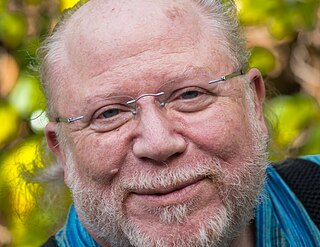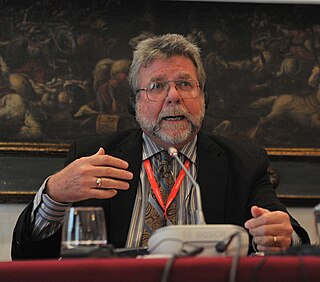
Citizen journalism, also known as collaborative media, participatory journalism, democratic journalism, guerrilla journalism or street journalism, is based upon public citizens "playing an active role in the process of collecting, reporting, analyzing, and disseminating news and information." Similarly, Courtney C. Radsch defines citizen journalism "as an alternative and activist form of news gathering and reporting that functions outside mainstream media institutions, often as a response to shortcomings in the professional journalistic field, that uses similar journalistic practices but is driven by different objectives and ideals and relies on alternative sources of legitimacy than traditional or mainstream journalism". Jay Rosen offers a simpler definition: "When the people formerly known as the audience employ the press tools they have in their possession to inform one another." The underlying principle of citizen journalism is that ordinary people, not professional journalists, can be the main creators and distributors of news. Citizen journalism should not be confused with community journalism or civic journalism, both of which are practiced by professional journalists; collaborative journalism, which is the practice of professional and non-professional journalists working together; and social journalism, which denotes a digital publication with a hybrid of professional and non-professional journalism.
The Society for Advancing Business Editing and Writing is an association of business journalists. Originally founded as the Society of American Business Editors and Writers, in 2018, it changed its name "as part of a broader effort to embrace a global focus on business journalism." Its headquarters is at the Walter Cronkite School of Journalism and Mass Communication at Arizona State University in Phoenix, Arizona.

Science journalism conveys reporting about science to the public. The field typically involves interactions between scientists, journalists and the public.
Environmental journalism is the collection, verification, production, distribution and exhibition of information regarding current events, trends, and issues associated with the non-human world. To be an environmental journalist, one must have an understanding of scientific language. The individual needs to put to use their knowledge of historical environmental events. One must have the ability to follow environmental policy decisions and environmental organizations. An environmental journalist should have a general understanding of current environmental concerns, and the ability to communicate information to the public in a way that is easily understood.

Eric Newton is an American journalist, writer and media consultant.
Leonard "Len" Downie Jr. is an American journalist who was executive editor of The Washington Post from 1991 to 2008. He worked in the Post newsroom for 44 years. His roles at the newspaper included executive editor, managing editor, national editor, London correspondent, assistant managing editor for metropolitan news, deputy metropolitan editor, and investigative and local reporter. Downie became executive editor upon the retirement of Ben Bradlee. During Downie's tenure as executive editor, the Washington Post won 25 Pulitzer Prizes, more than any other newspaper had won during the term of a single executive editor. Downie currently serves as vice president at large at the Washington Post, as Weil Family Professor of Journalism at the Walter Cronkite School of Journalism and Mass Communication at Arizona State University, and as a member of several advisory boards associated with journalism and public affairs.
Charles Laurence Strum was an American journalist and author. He worked as a senior editor at The New York Times from 1979 until his retirement in 2014.
Emily Lockhart, known professionally as Emma Lockhart, is an American journalist and former child actor, best known for her roles as a young Rachel Dawes in Batman Begins, and Laura in Ace Ventura Jr.: Pet Detective.

The Walter Cronkite School of Journalism and Mass Communication, is one of the 24 independent schools at Arizona State University and is named in honor of veteran broadcast journalist Walter Cronkite. The school, which is located at the downtown Phoenix campus, offers several undergraduate and graduate programs in journalism, and in fall 2011, launched its first doctoral program in journalism and mass communication.
John S. Clogston was an American journalist and academic with a speciality in the area of news media images of people with disabilities. He made a significant contribution to mass communication research through his development of five media models, which can be used in content analyses of news coverage of people with disabilities and disability issues. He was the author of Disability Coverage in 16 Newspapers published by the Advocado Press in 1990. He had been a wheelchair user since a car accident in 1985.

Political journalism is a broad branch of journalism that includes coverage of all aspects of politics and political science, although the term usually refers specifically to coverage of civil governments and political power.

Stephen K. Doig is an American journalist, professor of journalism at Arizona State University, and a consultant to print and broadcast news media with regard to data analysis investigative work. Doig moved to the university in 1996 after 23 years as a newspaper journalist, 19 of them with The Miami Herald. As of 2010, he taught classes in precision journalism, reporting public affairs, news writing, multimedia journalism, introduction to newsroom statistics, and media research methods.

Sarah Cohen is an American journalist, author, and professor. Cohen is a proponent of, and teaches classes on, computational journalism and authored the book "Numbers in the Newsroom: Using math and statistics in the news."
The following outline is provided as an overview of and topical guide to journalism:
Kelly Carr is an investigative business journalist.
Julie Cart, born in Louisiana, is an American journalist. She won the 2009 Pulitzer Prize for Explanatory Reporting, with her colleague, Bettina Boxall, for their series of stories looking at the cost and effectiveness of combating wildfires in the western United States. She has worked for the Los Angeles Times and several other news organizations. She currently covers environmental issues in the California state capitol as a writer with CalMatters
Bettina Boxall is an American journalist who covered water issues and the environment for the Los Angeles Times. She is a recipient of a Pulitzer Prize for Explanatory Reporting. She graduated in 1974, with honors, from the University of Maine in Orono. Boxall retired from the Times on May 3, 2022, after 34 years at the paper.

Beth A. Haller is a professor of mass communication and communication studies at Towson University, specializing in the handling of disability in news and new media. She serves on the advisory board of the National Center on Disability and Journalism, and traveled in Australia as a Fulbright Scholar in 2015.
Ian James Lee is an American journalist based in Britain for CBS News. Prior to working for CBS, he worked for CNN, and, before that, Lee was also the multimedia editor at the Daily News Egypt from 2009 to 2011. During that time, he also was a freelance video journalist for Time Magazine and spent a year as a package producer for Reuters. Lee has covered the 2011 Arab Spring, Euromaidan, Sochi Winter Olympics, 2013 Egyptian coup d'état in Egypt, 2014 Gaza War, 2016 Turkish coup d'état attempt, and 2017 North Korea crisis, among other things.
Susan Goldberg is an American journalist, former editor in chief of National Geographic Magazine, and current President and CEO of the WGBH Educational Foundation, the largest provider of programming to PBS. Before joining National Geographic, Goldberg worked at Bloomberg and USA Today. She is an advocate for cross-platform storytelling.







